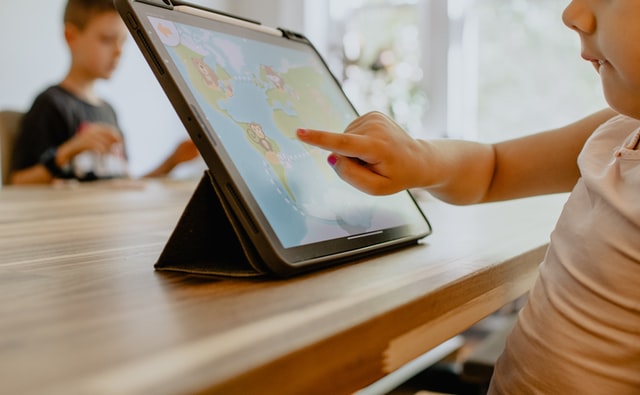Typically, when we discuss imagination, it is in the context of childhood. As a parent, I have spent countless hours plotting out schemes to encourage my three kids to engage the universe that exists between their ears instead of the one that exists behind a screen. We schedule outdoor adventures and offer up invitations to play with art supplies arranged neatly on big empty paper rolls, daring the kids to engage their imaginations and create. As I have watched my kids’ imaginations grow, turning our basement into a village built of blocks, with an ocean of paper and a forest of cardboard and pipe cleaner trees, creating sculptures out of popsicle sticks, rocks, and hot glue, and even mapping their dreams on paper, I have come to realize that Imagination is the soil from which our creativity grows. But at some point in our lives, the focus turns away from the development of our imaginations towards other ambitions.
So how can we, as adults, living in a time that tends to drain us rather than nourish us, create an environment in which our imagination nurtures our creativity? In my work as the owner and designer of a small lifestyle brand, imagination and creativity must be present in my daily life. As a solopreneur, the ideas, designs, and strategies that fuel my business are all seeds that need to be nourished by my imagination. Before the pandemic, I felt I had created a balanced schedule for myself, structured enough to manage the day-to-day of a small and growing business, but with enough flexibility to allow me time for things like drawing class, one-off classes on production and creation, and of course the time necessary to care for my young family. When the world shut down, I felt this schedule that I had worked hard to cultivate slip through my fingers, and with it, the balance and structure I had relied on to both feed my imagination and creativity, and to manage the myriad moving pieces in our family of five.
My days went from quietly planning production schedules, meeting with other business owners on how to promote and collaborate, and guarding blocks of time left open to create new designs, to the utter chaos of three kids under ten thrust into the new reality of isolation. Like many, I struggled to manage the demands of kids attending school virtually from their bedrooms. Making sure the right child arrived at the correct link at the right time, checking that assignments were completed and handed in, and helping them cope with the fact they were now sequestered from all they had known outside of our home. In the days and months that followed, we worked as a family to create an environment for our kids in which they were safe and where their imaginations and general well-being were nurtured. As I focused on cultivating support for my family, I yearned for the structure I had created for myself in the “before times,” and wrestled with feelings of loss and hopelessness. I could not continue to allow life to drain me of the ability to nourish myself and my imagination.
The last two years have produced a constant demand to pivot, mainly to respond to whatever new uncertainty emerged from the pandemic. The continuous stress on our minds and schedules is unrelenting and not ideal for anyone’s imagination and creativity. I found myself jealous of my kids’ schedules with large blocks of time dedicated to play, social interaction, creation, and moving their bodies. The same things that fuel our imaginations when we are young fuel them as we age, however the demands on our time are so much greater. It is often easier to allow our imaginations to remain dormant, living a lifestyle that does not allow the space for creativity to develop. We prioritize our time and resources based on what fire needs to be put out, not to stoke the endless possibilities that live within us. But now more than ever we need to till the soil of our imagination. The solutions that we seek for our families, our businesses, our institutions, and our communities all depend on it.
Creating the ideal environment for imagination to flourish is highly individual, but I do think adapting some of the schedule and behavior of our children and our younger selves could benefit many. First, we need to bring back recess. While an hour-long daily romp on the playground after lunch is probably not obtainable for most of us, 20-30 minutes of moving our bodies, preferably outside, probably is. Creating the space for our bodies and minds to wander during the day is essential to fostering our imaginations.
Then we need to remember that adults need playdates too. While many of our interactions have happened through the screen the last two years, making time in my schedule for social interaction and collaboration has been essential to my creative process and general well-being. Imagination and creativity don’t exist in a vacuum; they need interaction and feedback to exist and grow.
Finally, kids are famously great at being selfish; they guard their treasures with their lives, they throw elbows to get screen time, and there is rarely ambiguity around when they need food or sleep. We adults need to embrace this. We need to guard our personal time and needs as fiercely as we do any other appointments on our calendars. So often, we cede our own needs to the demands of our schedule, and everyone loses out. If we do not create time to take care of our most basic needs like sleep, how will we ever make time to create an internal or external environment to provide sustenance to our imaginations or bring our creative ideas to life?

Photo by Kelly Sikkema on Unsplash
Get To Know The Author
WHP Alum Lisa Buber (Greater MetroWest 15) is the owner of a small business.

